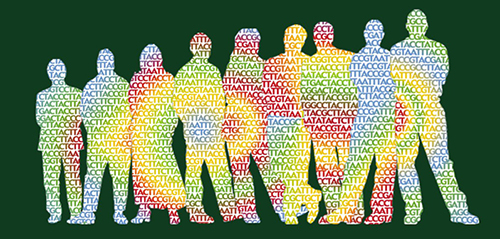
An analysis of data from the UK Biobank comparing exome data with phenotype data about common conditions such as asthma has revealed multiple new associations, many previously unknown, including links between rare genetic variants and common disease.
Although many studies have detailed how common genetic variants impact common diseases, the effects of rare variants have mostly been linked to rare disease and not studied extensively in the context of common disease.
The UK Biobank has collected detailed phenotypic data on around 500,000 participants and also has whole-exome sequencing data for many participants. For this study, researchers from AstraZeneca and the University of Melbourne carried out an analysis of genome and phenotype data to assess potential links.
As described in the journal Nature, Slavé Petrovski, the Head of AstraZeneca’s Centre for Genomics Research and Discovery Sciences in Cambridge, UK, and colleagues analyzed whole exome data from 281,104 Biobank participants and looked for links between rare genetic variants and more than 18,500 complex traits such as asthma that are influenced by multiple factors.
Overall, 46,837 variant and 1703 gene associations were found by the researchers. Some associations were previously known, but some were not. For example, around 12.1% of the those with European ancestry had one of 373 variants in the filaggrin gene FLG. Carriers of these variants were more likely to have dermatitis, asthma and also basal cell carcinoma and melanoma. “Concomitant increases in vitamin D levels suggest that the increased risk of skin cancer may be attributable to increased sensitivity to ultraviolet B radiation,” write the authors.
Notably, the researchers observed multiple examples where individual rare variants and common risk variants both appeared to contribute to the burden of disease. “This is consistent with our previous work demonstrating common and rare protein truncating variants in FLG have similar effect sizes for the risk of early asthma,” they conclude.
A problem with the UK Biobank, is that most participants have white European ancestry, although a small percentage of the genomes analyzed (around 12,000) were non-European. Overall, 5714 people of South Asian, 4744 of African and 1475 of Asian ancestry were included.
The only study-wide significant individual trait association among the non-European populations was between HBB gene variants and incidence of thalassemia in South Asian individuals, although 26 gene-phenotype associations were found in the non-European ancestry group that were not significant in Europeans. Similarly, 20 associations were only found in the European ancestry group.
The researchers believe their findings could be useful for target identification and drug development. “These associations were significantly enriched for targets of FDA-approved drugs, reinforcing the importance of human genetics in target identification,” write the authors.
“When followed up with functional investigation to understand biological mechanisms, these results can help improve the efficiency of pharmaceutical pipelines, contribute towards safety assessments, and reveal repositioning opportunities.”











